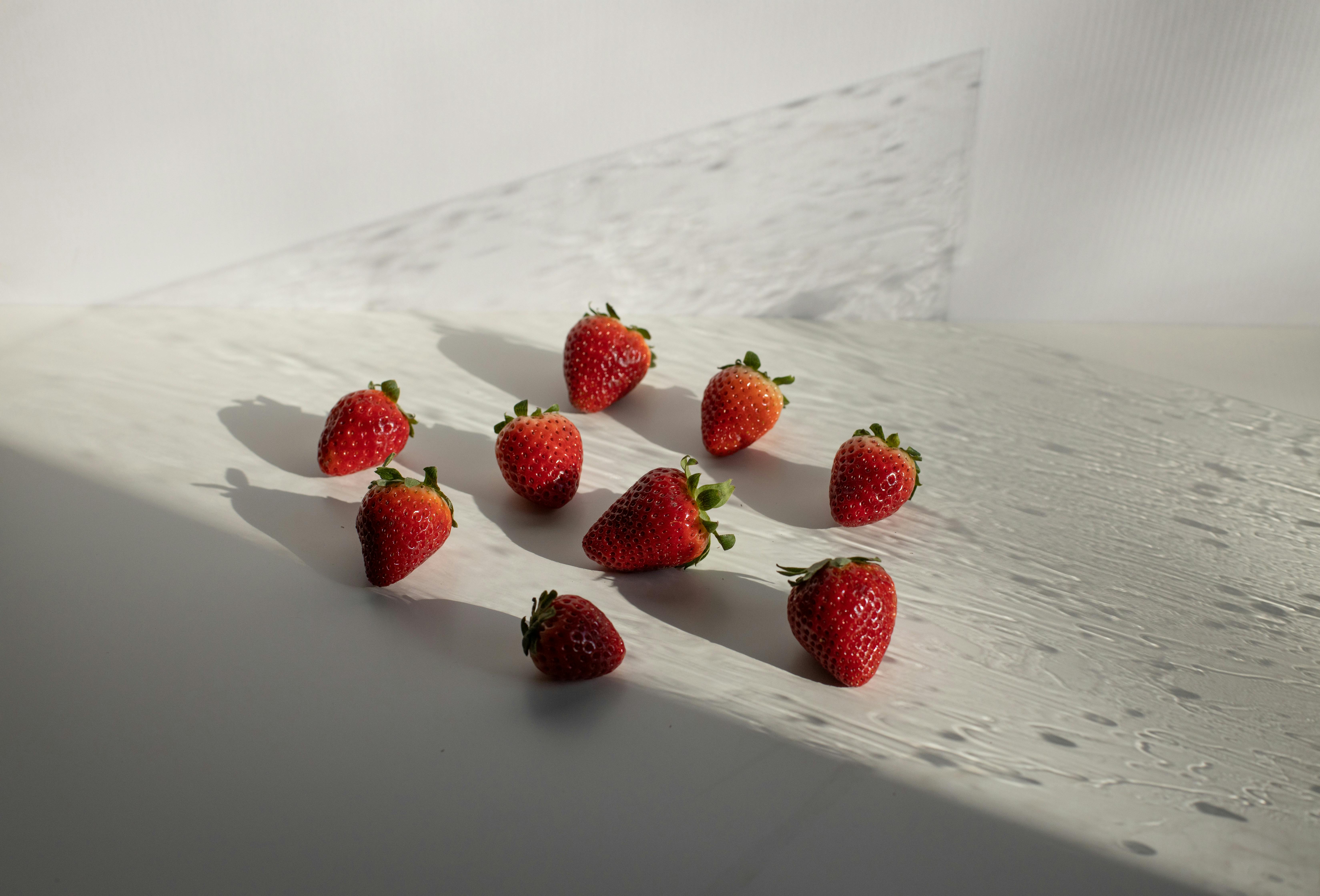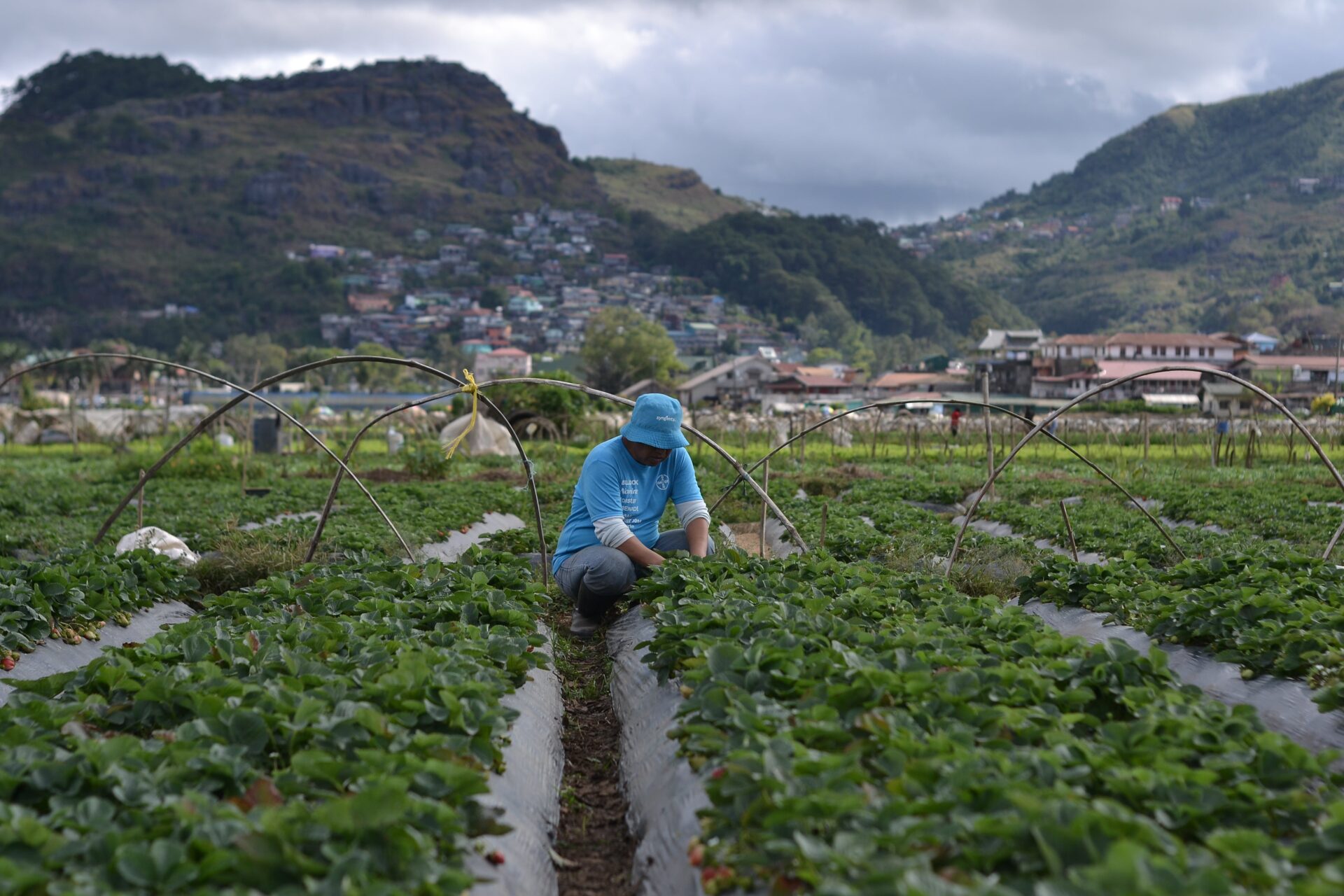Strawberries are a beloved fruit that can be grown in a variety of climates. Unfortunately, strawberry plants can droop for many different reasons. In this article, we’ll discuss some common causes of drooping strawberry plants and how to solve them. We’ll also provide advice on proper care and maintenance to keep your strawberry plants healthy and productive. Read on to learn more about why your strawberry plants are drooping and how to fix the problem.Strawberry plants may droop due to drought, fungal diseases, nutrient deficiencies, or pest infestations. Drought can cause the plant’s leaves to curl and wilt due to lack of water. Fungal diseases such as powdery mildew and leaf spot can also cause the leaves to become discolored and droop. Nutrient deficiencies, like a lack of nitrogen or iron, can also lead to drooping leaves. Finally, pest infestations such as aphids, mites, or slugs may result in the plant’s leaves curling up and wilting.
Poor Soil Quality
Soil quality can have a major impact on crop yields and the sustainability of agricultural practices. Poor soil quality is caused by a variety of factors, including soil erosion, compaction, nutrient deficiency, acidity, and salinity. The most common cause of poor soil quality is over-cultivation, which can lead to compaction, erosion, nutrient deficiency, and an increase in acidity. Soil compaction reduces the amount of air and water available to plants and can lead to lower yields. Erosion can cause nutrient-rich topsoil to be lost and result in decreased fertility levels. Nutrient deficiencies can lead to poor crop health and yield loss. Low pH levels can make certain nutrients unavailable for plant uptake, resulting in reduced yields. High salinity levels can also have a negative effect on crop yields by causing osmotic stress or toxic effects on plants.
To address poor soil quality issues it is important to have an understanding of the underlying causes of the problem. Practices such as cover crops, mulching, and alternative tillage methods can help reduce erosion and compaction while adding organic matter to improve fertility levels. Applying fertilizers with adequate nutrients for crop growth is also important for maintaining good soil quality. Additionally, adjusting pH levels with liming materials or other amendments may be necessary in order to make essential plant nutrients available for uptake by crops. It is also important to monitor salinity levels in soils so that corrective measures can be taken before they become too high for optimal crop growth. Taking these steps will help ensure that agricultural land remains productive over time by improving soil quality and increasing crop yields.
Nutrient Deficiency
Nutrient deficiency is a common health issue that can lead to a variety of health problems. It occurs when the body does not get enough of the essential nutrients it needs to function properly. Nutrient deficiencies can be caused by inadequate dietary intake, poor absorption, or increased need for certain nutrients. Symptoms of nutrient deficiencies vary depending on the nutrient and can include fatigue, dizziness, hair loss, and changes in skin color. It is important to recognize the signs of nutrient deficiencies and take steps to prevent them.
A healthy diet that includes a variety of nutritious foods is the best way to prevent nutrient deficiency. Eating a balanced diet with plenty of fruits, vegetables, lean proteins, whole grains, and healthy fats can help ensure that your body gets all the essential nutrients it needs. Taking a multivitamin or supplement may also be beneficial if you are unable to get all your needed nutrients from food alone.
If you are concerned about having a nutrient deficiency or have any symptoms of one, it is important to speak with your doctor or healthcare provider. They can help you determine which nutrients you may be lacking and provide advice on how best to address your specific needs. Your doctor may also recommend blood tests or other diagnostic tests to assess your levels of various vitamins and minerals.
Nutrient deficiencies can have serious implications for your health if left untreated. Taking steps to ensure that you are getting all the essential nutrients your body needs is important for maintaining optimal health and well-being.
Overwatering and Poor Drainage
One of the biggest problems with gardening is overwatering and poor drainage. When too much water is given to plants, the excess moisture can cause root rot, which can lead to stunted growth and even plant death. Poor drainage can also lead to high levels of soil salinity, which can reduce crop yields. To prevent these issues, it is important to be mindful of how much water you are giving your plants and make sure that your soil has good drainage. If your soil has poor drainage, it is best to mix in some organic matter such as compost or peat moss to help improve the drainage. Additionally, you should avoid overwatering by using a soaker hose or drip irrigation system to ensure that your plants only get the necessary amount of water.
Preventing Too Much Sun or Heat Stress
It is important to take precautions to prevent too much sun or heat stress. The most important step is to limit exposure to the sun. This can be done by wearing protective clothing such as hats, long-sleeved shirts, and sunglasses when outdoors. Additionally, it is important to use sunscreen on exposed skin when outdoors for prolonged periods of time. To further reduce the risk of heat stress, it is important to stay hydrated by drinking plenty of fluids and avoiding alcohol and caffeine. It is also important to take frequent breaks in shady or air-conditioned areas when out in the sun. Finally, if you notice any signs of heat exhaustion or heat stroke, it is important to seek medical attention immediately.
When engaging in physical activity outdoors, it is also important to pay attention to the weather conditions. If it is hot and humid outside, take extra precautions such as wearing lightweight clothing and drinking plenty of fluids before and during activity. It is also a good idea to plan outdoor activities during cooler times of the day such as early morning or evening hours. By taking these precautions, you can reduce your risk of too much sun or heat stress and enjoy outdoor activities safely.

Not Enough Sunlight
Plants need adequate sunlight to grow healthy and strong. Without enough sunlight, plants will become weak and may not survive. This is especially true for plants that require full sun, such as tomatoes or peppers. That’s why it’s important to make sure that your garden or outdoor space gets plenty of sun throughout the day. If you don’t have enough direct sunlight available, there are other options you can explore such as using a grow light or investing in reflective materials to increase the amount of light your plants get.
When it comes to gardening in areas with limited sunlight, there are several strategies you can use to ensure your plants get enough light. First, try to find a spot in your garden that gets direct sunlight for most of the day. If this isn’t possible, you may want to consider adding reflective materials around your garden area such as white gravel or white paint on fences or walls. This will help reflect the available light onto your plants and increase their growth rate.
You should also consider investing in a grow light if you don’t have enough natural sunlight available. Grow lights are designed specifically for helping plants receive adequate light even in low-light conditions. They come in a variety of shapes and sizes and can be used indoors or outdoors depending on what type of plant you’re trying to grow.
Finally, if you still don’t have enough natural sunlight available for your garden then you may want to consider growing shade-tolerant plants instead. Shade-tolerant plants are able to thrive even when grown in areas with limited sunlight exposure. Examples include ferns, begonias, hostas, and many more!
In conclusion, it is important for plants to receive ample amounts of sunlight for optimal growth and productivity. If there isn’t enough natural sunlight available then there are other options such as investing in reflective materials or using a grow light that can help make up for the lack of sun exposure. Additionally, some types of plants are more tolerant of shade and can still thrive even when grown in areas with limited exposure to direct sunlight!
Pest Infestation
Pests are a common problem for homeowners. Whether it’s ants, mice, termites, or some other type of pest, they can cause significant damage to your property and health. Pest infestations can cause physical damage to your home and property, as well as emotional distress. If left untreated, pest infestations can become worse over time and lead to more costly damage.
The most common signs of a pest infestation include seeing live bugs, droppings or tracks in the home, wood damage or tunnels in furniture or walls, and bite marks on skin. Pest infestations can also be detected by an unpleasant smell coming from the affected area. If you experience any of these signs, it is important to take action immediately to get rid of the pests and prevent further damage.
The first step in solving a pest infestation is to identify the type of pest that is present. This will help you determine the best course of treatment for the infestation. Once you have identified the type of pest that is present, you should take steps to eliminate it from your home. This may include using traps or baits, sealing up cracks and crevices where pests may enter your home, removing food sources that attract pests such as pet food and garbage cans, and hiring a professional exterminator if necessary.
It is also important to take preventative measures to keep pests out of your home in the future. This includes keeping food stored away properly and keeping all areas clean and free from debris that could attract pests. Regularly inspecting areas around your home for signs of pests can also help you identify potential problems before they become too serious.
If you suspect a pest infestation in your home or property, don’t wait until it becomes a bigger problem – take action immediately! Contacting a professional exterminator can help you identify the source of the problem quickly and effectively so that it can be treated appropriately before any additional damage occurs.
Powdery Mildew
Powdery mildew is a fungal disease that affects many plants, especially those grown in dry climates. It appears as white powdery spots on the leaves and stems of affected plants. The disease can spread rapidly and cause significant damage to the plant if not treated promptly. To control powdery mildew, it is important to keep the leaves and stems of the plant dry. If you are growing your plants in containers, make sure they are well-drained and not overwatered. If you notice any signs of powdery mildew, treat affected plants with an appropriate fungicide as soon as possible.
Leaf Spot Diseases
Leaf spot diseases are caused by various fungi and bacteria that can affect many types of plants. These diseases typically appear as spots or lesions on the leaves of affected plants. Leaf spot diseases can be difficult to control since they can spread quickly from plant to plant. To prevent leaf spot diseases from occurring, it is important to keep your plants healthy by providing them with adequate water and nutrients. If you notice any signs of leaf spot disease, treat affected plants with an appropriate fungicide or bactericide as soon as possible.
Root Rot
Root rot is a common problem in many types of plants. It is caused by various fungi that attack the roots of affected plants and can cause significant damage if left untreated. To prevent root rot from occurring, it is important to keep your soil well-drained and free from standing water or overly wet conditions. If you notice any signs of root rot, treat affected plants with an appropriate fungicide or other soil-borne disease treatment product as soon as possible.

Conclusion
It is important to understand the causes of your drooping strawberry plants so that you can take appropriate measures to solve the issue. In most cases, drooping can be caused by inadequate soil moisture, improper fertilization, pest infestations, or disease. By addressing these issues with proper watering, fertilization, pest management, and disease control measures, you can help ensure healthy and productive strawberry plants. If all else fails, you may need to replace the plants with healthier stock.
Overall, drooping strawberry plants are a common issue for gardeners but one that can be prevented with proper care and maintenance. With the right strategies in place, you can ensure your strawberries stay healthy and produce plenty of fruit in the long run.



